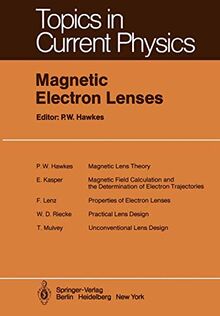
No single volume has been entirely devoted to the properties of magnetic lenses, so far as I am aware, although of course all the numerous textbooks on electron optics devote space to them. The absence of such a volume, bringing together in formation about the theory and practical design of these lenses, is surprising, for their introduction some fifty years ago has created an entirely new family of commercial instruments, ranging from the now traditional transmission electron microscope, through the reflection and transmission scanning microscopes, to co lumns for micromachining and microlithography, not to mention the host of experi mental devices not available commercially. It therefore seemed useful to prepare an account of the various aspects of mag netic lens studies. These divide naturally into the five chapters of this book: the theoretical background, in which the optical behaviour is described and formu lae given for the various aberration coefficients; numerical methods for calculat ing the field distribution and trajectory tracing; extensive discussion of the paraxial optical properties and aberration coefficients of practical lenses, il lustrated with curves from which numerical information can be obtained; a comple mentary account of the practical, engineering aspects of lens design, including permanent magnet lenses and the various types of superconducting lenses; and final ly, an up-to-date survey of several kinds of highly unconventional magnetic lens, which may well change the appearance of future electron optical instruments very considerably after they cease to be unconventional.